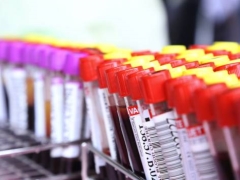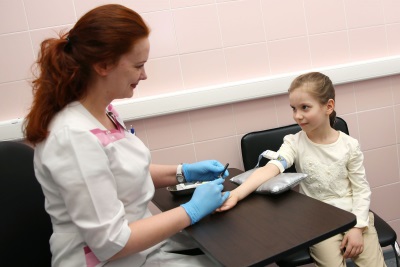Blood platelet norm in children
Platelets are called blood cells in the form of rounded plates that have no nuclei. And the increase in their number in the bloodstream, and a reduced number of platelets is dangerous for the health of the child. For this reason, parents should know what these blood cells are, how many of them should be normal and why the number of platelets can vary.
What are they needed for?
Such blood cells play a large role in the blood coagulation system.
Thanks to them, in case of damage to the blood vessels, the bleeding stops and the site of damage closes with a blood clot. In addition, on its surface, blood plates carry various biologically active compounds, immune complexes, as well as clotting factors.
Blood plates are formed in the red bone marrow, and after entering the bloodstream, their lifetimes range from two to ten days, after which the platelets are transferred to the spleen, where they are destroyed. At this time, new cells continuously enter the bloodstream. Thus, the platelets are constantly updated, and their total number remains at about the same level.
How is platelet count determined?
Evaluation of the number of platelets carried out by clinical blood analysis. All doctors call this study the most important in childhood. To conduct it, blood from a child can be taken from a finger, as well as from a vein. The smallest children can take blood from the heels. Platelets are counted in a liter of blood, denoting them in the analysis form in 109/ l.
A blood test may be prescribed to the child according to plan, even if he does not have any complaints.
An unplanned direction for analysis is given to children who have bleeding gums, episodes of bleeding from the nose, non-stop bleeding after a cut, the frequent appearance of bruises, complaints of fatigue, pain in the limbs and other ailments.
Also, platelets are required to check for anemia, spleen enlargement, leukemia, viral infections, systemic and other diseases that can provoke a change in the number of these blood cells.

What affects their number?
The number of platelets depends on:
- Age of the child. Newborns have more of them than babies older than a month and older children.
- Presence of diseases as well as medication.
- Physical activity. For some time after it, the number of blood platelets becomes higher.
- Baby food. There are products that can thin the blood, and some foods stimulate the formation of blood cells.
- Time of day and time of year. During the day, fluctuations in the number of platelets within 10% are observed.
In order for the blood test result to be reliable, and the number of platelets in the analysis form correspond to the actual number of cells in the blood, it is important to follow these recommendations:
- The child should not eat before taking blood. If a blood sample is taken from a baby, the interval between feeding and handling should be 2 hours.
- Before analysis, the child should not have emotional or physical stress. It is also important and correct to choose clothes for the child to avoid hypothermia. It is also not recommended to donate blood immediately after the child entered the clinic from the street.Let him rest for 10-15 minutes in the corridor and calm down.
- If your child is already undergoing any treatment, be sure to warn the doctor that you are taking medications, as they may affect the overall picture.
Table by age
The rate of platelet levels in children is represented by the following indicators:
|
Child's age |
Platelet count at 109/ l |
|
First day |
180 to 490 |
|
From the fifth day of life to a year |
180 to 400 |
|
1 year and older |
160 to 390 |
Why can the level of platelets in the blood decrease, see the next video.
How can platelet count change?
If a child has an increase in the number of blood platelets of 20-30 x 109 / l and above, this is called thrombocytosis.
With a decrease in the number of such blood cells less than 100 x 109 / l is diagnosed thrombocytopenia.
The basic facts about the increased and reduced number of platelets in a child’s blood are presented in the table:
Thrombocytosis | Thrombocytopenia |
Why does | |
|
|
How manifest | |
|
|
What is the danger | |
The appearance of blood clots in the vessels, which is causing disruption of the blood supply to the internal organs, including the brain and heart. | The deterioration of blood clotting, resulting in the appearance of long external, as well as internal bleeding and hemorrhage. |
How to treat | |
Depending on the cause of the disease, cytostatics, anticoagulants, antiplatelet agents, microcirculation drugs and other groups of drugs may be prescribed. In severe cases, thrombocytopheresis is performed. It is also recommended that the child be given more drink so that the blood is diluted. | Depending on the reason, corticosteroids, immunoglobulins, vitamin preparations and other means are prescribed. If there is evidence, spleen may be removed or platelet transfusions may be administered. It is also recommended that the child limit physical activity to reduce the risk of hematomas and bleeding. |
Thrombocytosis | Thrombocytopenia |
What products are recommended | |
|
|
What products to avoid | |
|
|
More information about the clinical analysis of blood, see the transfer of Dr. Komarovsky.












